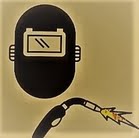Radiography is an essential diagnostic and inspection tool widely used in medical, industrial, and engineering applications. Below is a comprehensive Radiography Quiz of 15 multiple-choice questions that touch on core concepts in radiographic testing. Each question includes the correct answer and a detailed explanation to enhance your understanding.
1. The speed of a film is determined by:
a. The size of the grain
b. The thickness of the base
c. The temperature of the chemicals
d. The exposure time
✅ Correct Answer: a. The size of the grain
Explanation:
Larger grains in the film emulsion are more sensitive to radiation, increasing speed but sacrificing detail. Grain size directly influences how quickly a film responds to exposure.
2. Film contrast is:
a. The amount of blackness on the film
b. The range of exposures
c. The ability of film to show variations in density
d. The graininess of the image
✅ Correct Answer: c. The ability of film to show variations in density
Explanation:
Film contrast is crucial for detecting subtle differences in material composition and thickness by showing various gray levels between black and white.
3. Which of the following is not an exposure factor?
a. Kilovoltage (kV)
b. Milliamperage (mA)
c. Exposure time
d. Object to film distance
✅ Correct Answer: d. Object to film distance
Explanation:
Exposure factors are settings that affect the amount of radiation. Object-to-film distance affects sharpness and magnification, not radiation exposure directly.
4. The function of a penetrameter is to:
a. Measure radiation intensity
b. Indicate film sensitivity
c. Check exposure time
d. Measure scatter radiation
✅ Correct Answer: b. Indicate film sensitivity
Explanation:
Penetrameters (IQIs) verify the image quality by demonstrating the smallest defect or change in thickness that the film can detect.
5. The lead letter “B” placed on a radiograph indicates:
a. Bottom of the film
b. The back of the film
c. Base image marker
d. Beam direction
✅ Correct Answer: b. The back of the film
Explanation:
Orientation markers like “B” are used to ensure correct interpretation. “B” identifies the back side of the film, helping prevent image misreading.
6. The material most commonly used for radiographic film base is:
a. Acetate
b. Cellulose nitrate
c. Polyester
d. Polycarbonate
✅ Correct Answer: c. Polyester
Explanation:
Polyester is durable, flexible, and resistant to heat and chemicals, making it ideal as the base material in radiographic films.
7. The wavelength of X-rays is:
a. Long
b. Medium
c. Short
d. Variable
✅ Correct Answer: c. Short
Explanation:
Short wavelengths allow X-rays to penetrate solid objects, which is why they’re effective for both imaging and non-destructive testing.
8. Intensifying screens are used to:
a. Darken the image
b. Prevent overexposure
c. Intensify the image
d. Improve grain size
✅ Correct Answer: c. Intensify the image
Explanation:
Intensifying screens convert X-rays into visible light, which in turn exposes the film more effectively, reducing the required dose.
9. The main purpose of a grid in radiography is to:
a. Increase contrast
b. Reduce scatter radiation
c. Decrease exposure time
d. Measure X-ray penetration
✅ Correct Answer: b. Reduce scatter radiation
Explanation:
Grids filter out scattered X-rays before they reach the film, which helps improve image contrast and diagnostic accuracy.
10. The density of a film is measured by:
a. Fluoroscope
b. Densitometer
c. Thermometer
d. Lux meter
✅ Correct Answer: b. Densitometer
Explanation:
A densitometer evaluates the optical density of a film, indicating how much light is absorbed through exposed areas.
11. The difference in densities seen on a radiograph due to section changes in an item is:
a. Film contrast
b. Screen effect
c. Subject contrast
d. Scatter effect
✅ Correct Answer: c. Subject contrast
Explanation:
Subject contrast results from variations in material density or thickness and determines the visibility of different parts in the image.
12. Which type of film would exhibit the greatest contrast grain?
a. Slow
b. Medium
c. Fast
d. High-speed
✅ Correct Answer: a. Slow
Explanation:
Slow films have finer grain and produce high-contrast images with more detail—ideal for detecting small flaws.
13. X-rays are produced by:
a. Electron acceleration
b. The rapid deceleration of electrons
c. Proton fusion
d. Magnetic fields
✅ Correct Answer: b. The rapid deceleration of electrons
Explanation:
When high-speed electrons hit a metal target and decelerate rapidly, X-rays are emitted in a process known as Bremsstrahlung radiation.
14. Which of the following is a function of lead screens?
a. Absorb primary radiation
b. Prevent light leaks
c. To reduce exposure time
d. Improve grid ratio
✅ Correct Answer: c. To reduce exposure time
Explanation:
Lead screens increase film sensitivity by converting X-rays to secondary radiation, requiring shorter exposures for the same image quality.
15. A straight, dark line in the center of the film of a weld cap would probably be:
a. Porosity
b. Slag inclusion
c. Lack of penetration
d. Linear crack
✅ Correct Answer: d. Linear crack
Explanation:
Cracks appear as dark lines because they provide less material for X-ray absorption. A straight, central dark line suggests a crack in the weld cap.
Conclusion
Whether you’re studying radiography for certification or refining your NDT skills, these 15 questions and their explanations highlight key concepts crucial to mastering the subject. Understanding the rationale behind each answer not only prepares you for exams but also strengthens your practical application of radiographic techniques.
Other MCQs :
